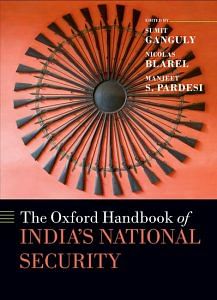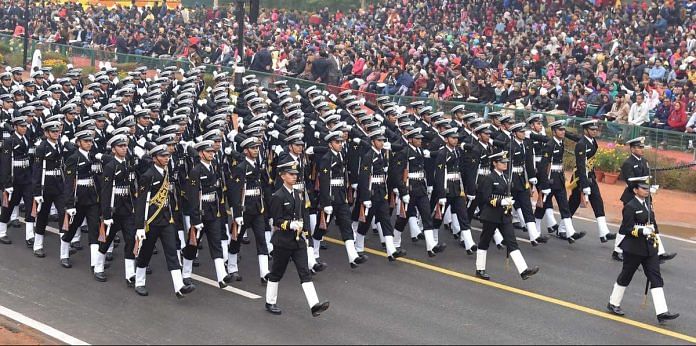The Oxford Handbook might have enabled deeper engagement if it had a narrower conception of national security
Defining national security is a fraught exercise; indeed, its meaning is intensely contested. Sumit Ganguly, Nicolas Blarel and Manjeet S. Pardesi, the editors of The Oxford Handbook of India’s National Security, are intensely aware of this and adopt a mid-level conceptualisation of national security between ‘traditional’ concerns about security with ‘expansive’ concerns about security.
India’s emergence as a major power makes this volume timely and indispensable, simply because there are no dedicated scholarly accounts of India’s national security (India’s National Security: A Reader edited by Kanti Bajpai and Harsh V Pant being an exception), which this work seeks to fill. This collection of articles is worth reading and generally accessible to both lay readers and experts to gain a broad understanding of India’s national security challenges.
The book combines three pathways to the study of India’s national security — human-centric or non-traditional, traditional security and critical approaches.
Traditional security is state-centric focused on the international system, the state’ military strength, the nature of the external threat environment facing the state, its military strategy and its capacities to meet threats to its territorial integrity and internal cohesion. The volume’s definition of human-centric approaches include the environmental challenges, economic issues, international migration and cross border criminal activity. The final critical approach covers feminist, postcolonial and other perspectives.
As a reference work it does not manage to combine or successfully apply all these approaches consistently and adequately.
Themes covered
Divided into five sections, the first part of the book deals with the theoretical dimensions of national security, along realist, liberal and constructivist lines. Among these chapters, Ian Hall’s chapter that assesses Indian national security through a liberal lens is well worth a read. Mallavarupu’s, which analyses India’s national security from a constructivist perspective, while striking the right themes uses too many quotes denuding the chapter of analysis. The second part deals with what traditionally encompass national security with reasonable, yet mostly overviews from Richard Bitzinger, S. Paul Kapur, Manjeet Pardesi and Gaurav Kampani. The third part, which complements the second, explores the domestic dimensions of national security. The themes relate to state capacities, insurgencies and the Indian state’s counterinsurgency response and evolution of Indian intelligence.
This part arguably features the best collection of articles in the book with solid individual contributions by William R. Thompson, Shivaji Mukherjee, and Paul Staniland. Indeed, they are successively sequenced making them very complementary, which is not necessarily the case with the others sections in the volume.
Albeit Mahadevan’s chapter, while doing a fair job in tracing the evolution of Indian intelligence since independence, and identifying the misunderstandings about the role and function of intelligence could have gone further in explaining, whether intelligence should support policy. The final and fifth part deals with how India’s rise affects and influences its national security.
Nicolas Blarel’s chapter in this part on India’s strategic culture is an excellent survey of India’s strategic culture. It captures the competing notions about what constitute strategic culture and how contentious it remains within the Indian strategic discourse and mostly critically the continuities of Indian foreign policy.
Ideally, David Brewster’s chapter on The expansion of India’s Security Sphere, another worthy addition, should have followed thereby complementing Blarel’ analysis. The evolution of India’s role and contribution to UN Peacekeeping Operations and why India has remained a steadfast and consistent contributor to UNKPOs since the inception of the UN is well analysed by Geetanjali Chopra and David Malone.
Traditional definition
Overall, some chapters cover familiar ground and might not be worth the trouble perusing. Others as noted are worthy contributions. The volume is comprehensive, but in subscribing to a mid-level definition of national security, the book generates breadth, compromising depth.
Consequently, in its quest to cover the gamut of issues and challenges that encompass India’s national security, it loses a measure of rigor depriving the reader of an acute understanding of the constraints, dilemmas and opportunities facing Indian national security.
A narrower conception of national security in keeping with the traditional definition might have enabled deeper engagement, irrespective of its limitations. A second volume could have followed covering non-traditional and critical approaches of India’ national security.
It could have also benefited from dedicated chapters on water security and the role of women in India’s national security institutions and architecture, specifically in the armed services. Instead, water security is covered as part of a chapter on environmental security with four and a half pages dedicated to the subject.
The absence of a chapter on the growth and the presence of women across the three armed services is another glaring omission and a missed opportunity explaining the evolution of the Indian state’ shift in permitting women to serve and identified the social and institutional impediments that remain in preventing the increased involvement of women in military service.
Indeed, if the editors had made good on the promise of including a feminist perspective as part of the critical approach that they claim is integral to their definition of national security, it would have added more value to the handbook.
As with any edited collection, the chapters are uneven in quality. Some are analytical, others more descriptive. Despite these shortcomings, this handbook does give the reader a good start on the complexities and challenges confronting Indian national security, but it should not be treated as definitive or the last word.

Kartik Bommakanti is an Associate Fellow with the Strategic Studies Programme at the Observer Research Foundation, New Delhi.



